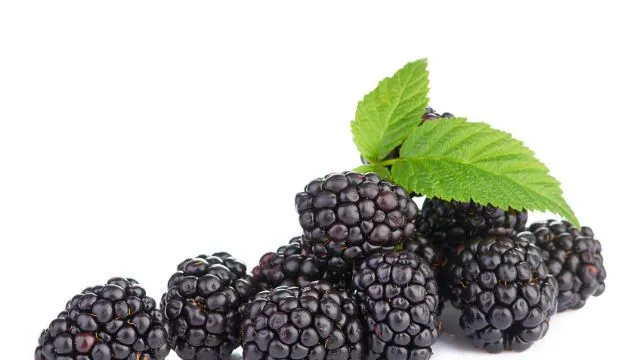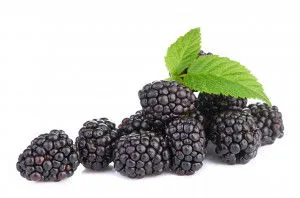
- Share on Facebook67
- Share on Pinterest
- Share on Twitter
You’ve probably heard time and time again the importance of incorporating a variety of richly colored fruits and vegetables into your diet.
Research indicates that the multiple components of food work synergistically to provide the full benefits associated with a food’s various nutrients. Therefore nutrition professionals advise consuming whole foods rather than supplements for sources of antioxidants, vitamins, minerals and other nutrients.
The natural hues of fresh fruits and vegetables are often a reliable indicator as to their nutrient makeup. Unlike artificially colored processed products, fresh fruits and vegetables acquire their colors from their phytonutrient content. Blue foods in general tend to be particularly high in a particular class of compounds called anthocyanins.
These potent phytonutrients are what account for the blue hue of various fruits and vegetables, and have been proven to provide antioxidant, anti-inflammatory and anticarcinogenic qualities.
With summer in full swing, here are three blue foods you can easily incorporate into sweet summertime salads, smoothies, desserts and more.
1. Blueberries. Perhaps the first food that pops into one’s mind when they think of a blue food is the deliciously sweet blueberry. Blueberries rank highest among any other fruit for antioxidant concentration. Thanks to their exceedingly high phytonutrient content, including anthocyanins, carotenoids and flavonoids, these potent berries are known for their disease prevention capabilities.
A recent study has found that the anthocyanin concentration found in blueberries successfully contributed an anti-proliferation effect and induced cell death in two lines of colon cancer cells, indicating that snacking on these summertime berries may help prevent colon cancer.
2. Blackberries. A close cousin of the blueberry, the blackberry is sometimes referred to as a brambleberry, dewberry or thimbleberry. Blackberries, like blueberries, are also an excellent source of anthocyanins and several other phytonutrients. Blackberries are rich in tannins, which are known to reduce intestinal inflammation and aid in digestive upset.
They are also an excellent source of vitamin K, an important vitamin that promotes muscle relaxation and aids women in regular menstruation. Their high polyphenol content has been shown to reduce the risk of neurological decline and degenerative diseases.
3. Beets. Slightly more purple in color than blue, beets fall into this category thanks to their exceedingly high antioxidant capacity. Beets achieve their rich hue from a class of compounds called betalains. Betalains are potent antioxidants that act to protect the body from free radical damage. They also play an important role in the body’s detoxification system, which rids various toxins from the liver and other important organs.
Along with being a detoxifying food, beets have been found to aid in the prevention of various types of cancers, thanks in part to their unique blend of phytonutrients that include manganese and vitamin C.
 Both blackberries and blueberries make an excellent contribution to summertime desserts, or can be enjoyed freshly picked from the bush. Always opt for organic, as berries can easily harbor high concentrations of pesticides.
Both blackberries and blueberries make an excellent contribution to summertime desserts, or can be enjoyed freshly picked from the bush. Always opt for organic, as berries can easily harbor high concentrations of pesticides.
Beets can be enjoyed shaved into salads or as an ingredient in smoothies and juices. Minimal cooking is preferred when preparing beets, as the heat tends to reduce the antioxidant concentration and effectiveness.
-The Alternative Daily
Sources:
http://www.naturalwellness.com/nwupdate/rainbow-nutrition-why-having-the-blues-is-good-f
or-you
http://pubs.acs.org/doi/abs/10.1021/jf051333o
http://www.webmd.com/food-recipes/features/blueberries-nutritious-things-come-in-small-p
ackages_
http://www.huffingtonpost.ca/2013/01/31/blackberry-facts_n_2581622.html
http://healthyeating.sfgate.com/benefits-eating-blackberries-4038.html
http://advances.nutrition.org/content/4/3/384S.short
http://www.whfoods.com/genpage.php?tname=foodspice&dbid=49
https://www.thealternativedaily.com/top-3-health-promoting-properties-beets
- Share on Facebook67
- Share on Pinterest
- Share on Twitter

